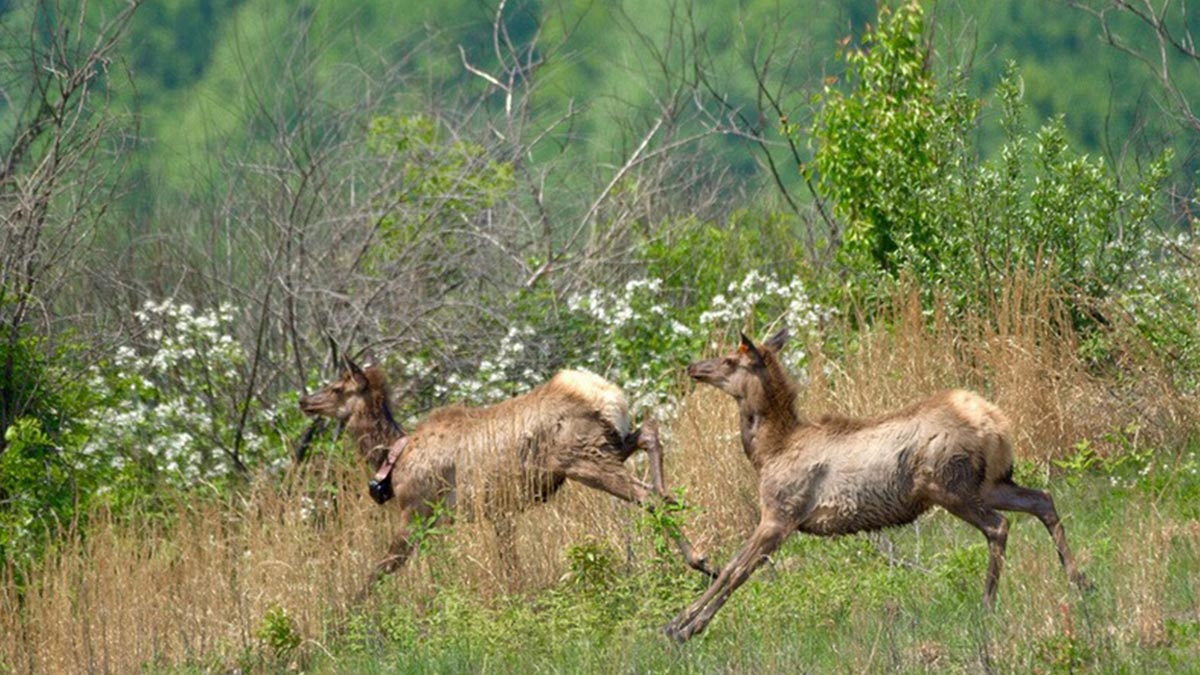The latest health check on West Virginia’s elk herd shows the animals get a passing grade.
“There’s no way to weigh them, but we do check body fat and those kinds of things and we have what appear to be very healthy animals we’re dealing with,” Randy Kelly, West Virginia Division of Natural Resources (DNR) elk project leader, told the Metro News. “Movements are all fine and from an eyeball standpoint they all appear to be in very, very good shape.”
Kelly and his elk project team currently have 27 elk outfitted with collars so they can monitor their habitat use and movement. They also recently recaptured a couple of elk with interesting histories. One of them is referred to as “Orange 15” because of the color and number of its ear tag. It is the first cow elk to give birth in West Virginia. Another is “Black 1,” now an adult bull, but was the first calf biologists collared in 2017.
The Rocky Mountain Elk Foundation has a strong history with West Virginia’s elk herd. RMEF provided funding and volunteer manpower to assist with the successful introduction of elk onto their historic West Virginia range in 2016 and additional land protection and habitat enhancement work since then.
Dating back to 1997, RMEF and its partners completed 53 conservation and hunting heritage outreach projects in West Virginia with a combined value of nearly $10 million. These projects conserved 33,432 acres of habitat and opened or improved public access to 32,371 acres.
(Photo credit: Colorado Parks and Wildlife)
